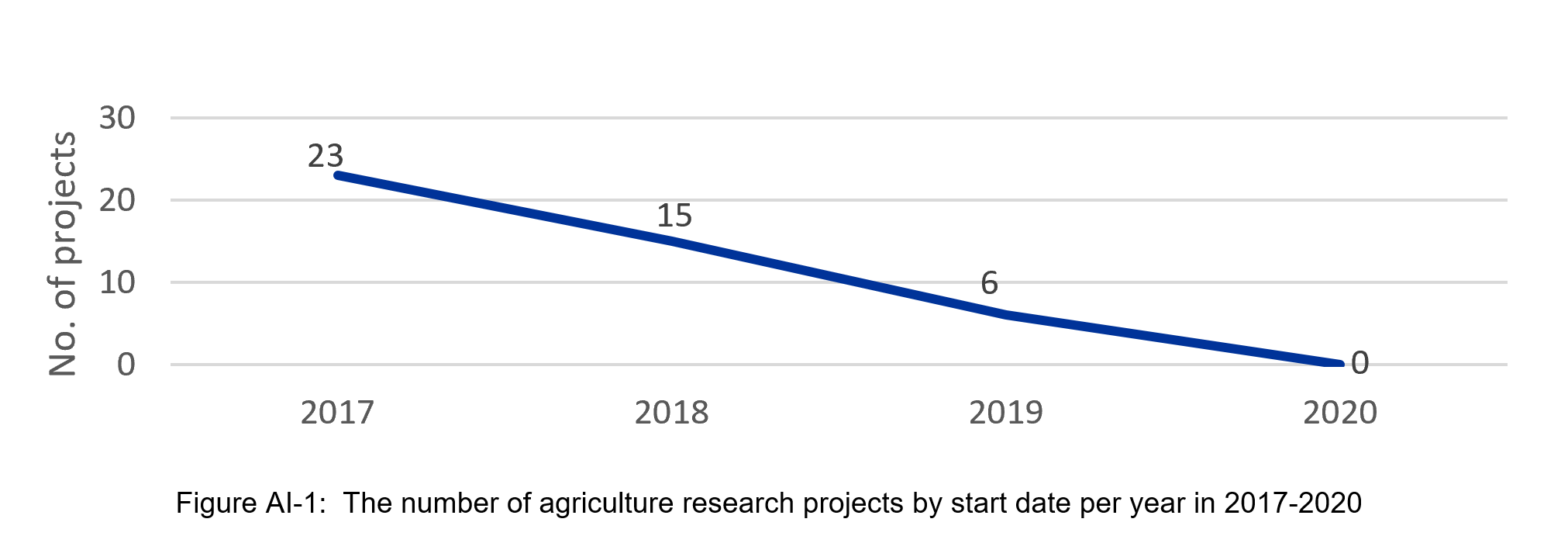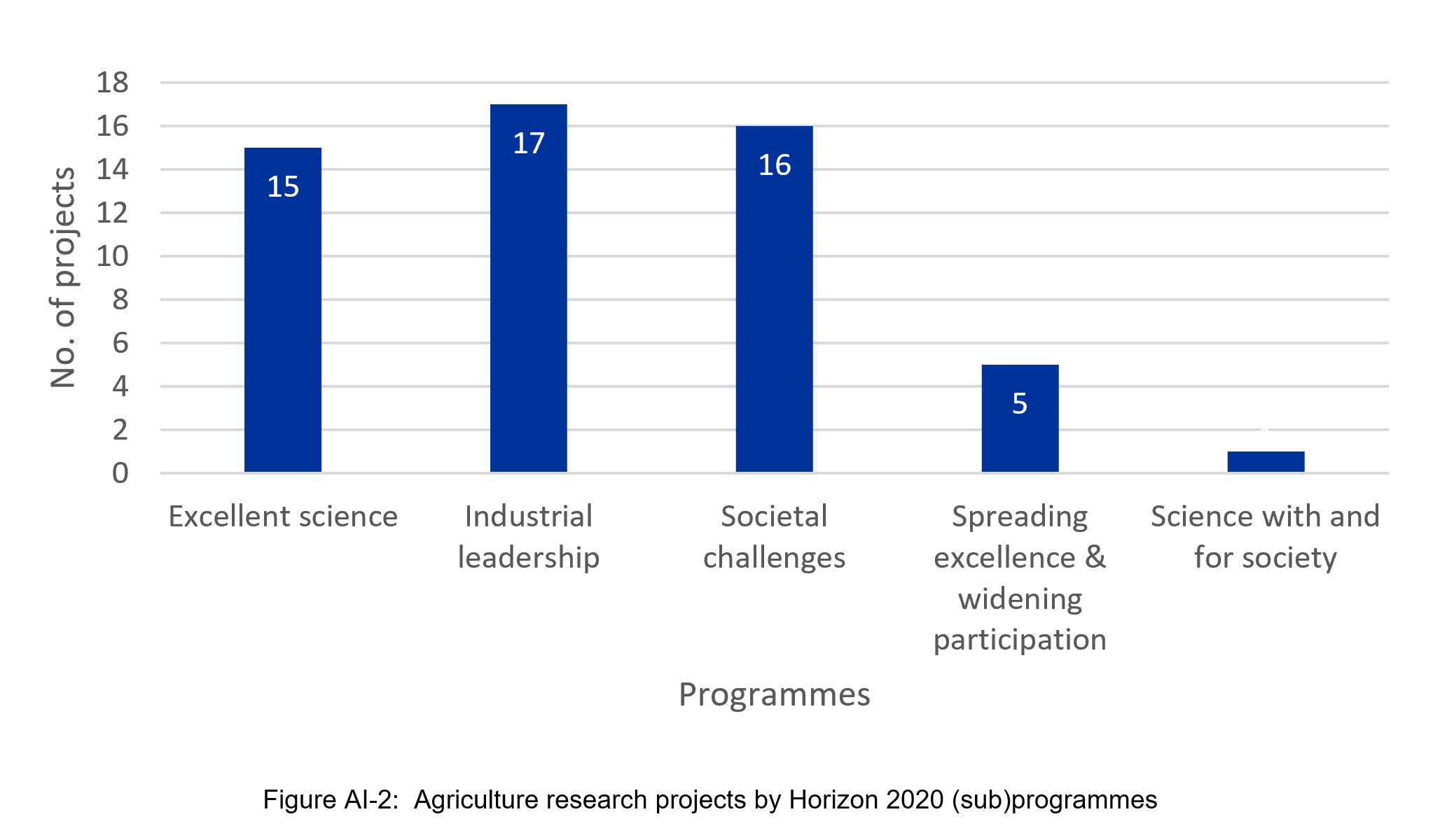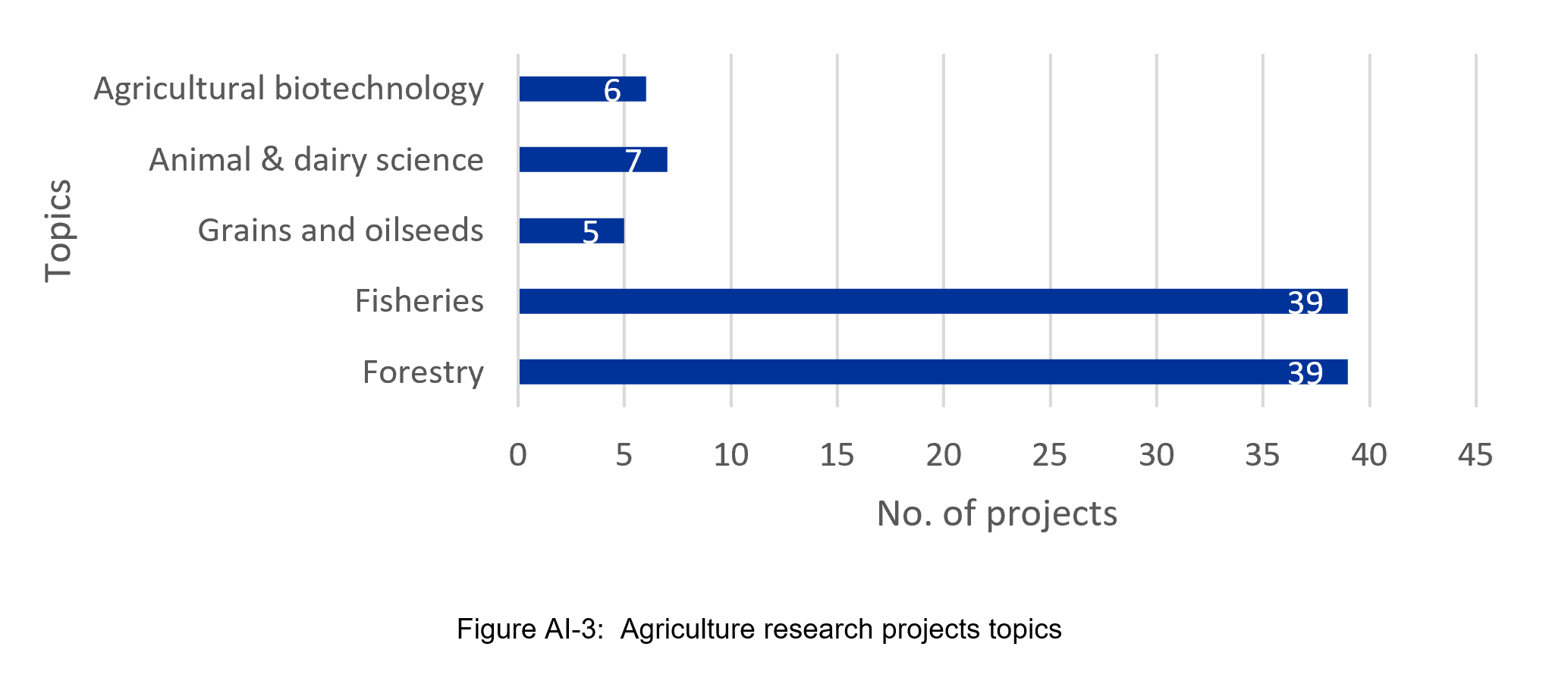R&D - EUON
Agriculture
This section gives an overview of the Horizon 2020 projects focused on agriculture. The projects that contained the keyword “’agriculture*’ in their subject classification were filtered out from the general collection of nanotechnology projects developed for the study.
In the period of 2017-2020, Horizon 2020 funded 44 projects in the field of agriculture. Projects in agriculture comprised 4% of all research projects in nanotechnology funded by the EU in 2017-2020. In general, it shows that the interest to nanotechnology in agriculture was low.
Analysis of the start date of agriculture projects shows that most of them received funding and started in 2017 and 2018. H2020 covered the 2014-2020 period, so with 2017 as a mid-term of the programme, it is not surprising that most project started during this period. The decreasing number of research projects towards the end of the funding period is explained by the fact that most research projects require several years to complete.

H2020 contained several high-level programmes/priorities/specific actions and their sub-programmes. Three thematic and two horizontal high-level programmes funded nanotechnology research and innovation:
- Priority “Excellent science” (1) aimed to improve the excellence of the European research base and consolidate the European Research Area (ERA) to increase the global competitiveness of European research and innovation.
- Priority “Industrial leadership” (2) focused on boosting the development of the technologies and innovations that will underpin future businesses and help innovative European SMEs to grow into world-leading companies. This priority contained a sub-programme targeted at nanotechnologies.
- Priority “Societal challenges” (3) focused on the societal challenges that were identified in the Europe 2020 strategy and aimed at encouraging sufficient research and innovation efforts necessary to cope with these challenges and achieve the EU strategic goals.
- Specific objective “Spreading excellence and widening participation” (4) was a horizontal objective of Horizon 2020 aimed at pooling research and innovation talents in Europe, nurturing and connecting pools of excellence to maximise and fully exploit Europe’s research and innovation potential.
- Specific objective “Science with and for society” (5) was a horizontal objective of Horizon 2020 aimed at strengthening the collaboration between science and society by engaging citizens in science and using the collective intelligence for solving research problems, promoting scientific careers, etc.
Each of the described high-level programmes contained the whole hierarchy of sub-programmes. Usually, one project received funding through a combination of programmes. Those combinations of (sub)programmes in 2017-2020 were filtered out. Figure AI 2 gives an overview of programmes and subprogrammes that funded agriculture research under Horizon 2020.

In 2017-2020, Horizon 2020 agriculture research projects were almost equally focused on scientific excellence, industrial innovation and solving societal challenges. Seventeen projects were funded under the priority “Industrial leadership” that promoted nanotechnology innovation and commercialisation. Sixteen projects also focused on the third priority of Horizon 2020 – Societal challenges. The agriculture projects also received funding under the priority “Excellent science” and its subprogrammes (15 projects). These subprogrammes were focused on building the capacity of individual researchers and their teams, as well as encouraging collaboration between researchers. Finally, five projects were focused on the fourth horizontal objective that aimed to pool research talents and strengthen research networks in Europe and one project was funded under the horizontal objective “Science with and for society”.
According to the project classification applied in Cordis, agricultural projects focused on five topics. One project can combine several topics.

Most projects focused on forestry and fisheries. An illustrative example of a fishery project is provided the table below.
| Table AI-1: An example of a fishery project | |||
|---|---|---|---|
| Project title, acronym, (coordinating country) |
Objectives | Start, end dates | Funding (EU contribution) |
| Optimisation and Large-scale Commercialisation of Next Generation Cooling Equipment for Food Industry, nanoICE (Norway) | nanoICE is a patent pending technology that addresses the deficiencies of other commercial ice products used today by addressing the challenges faced by seafood harvesters and processors, namely: product weight retention; longer shelf-life; improved appearance; reducing hard labour; limited space for catch and trying to improve on these at an affordable price. nanoICE is game changing ice machine that delivers a combination of break-through solutions for all these challenges. | 2018-2021 | € 1 736 000 |


